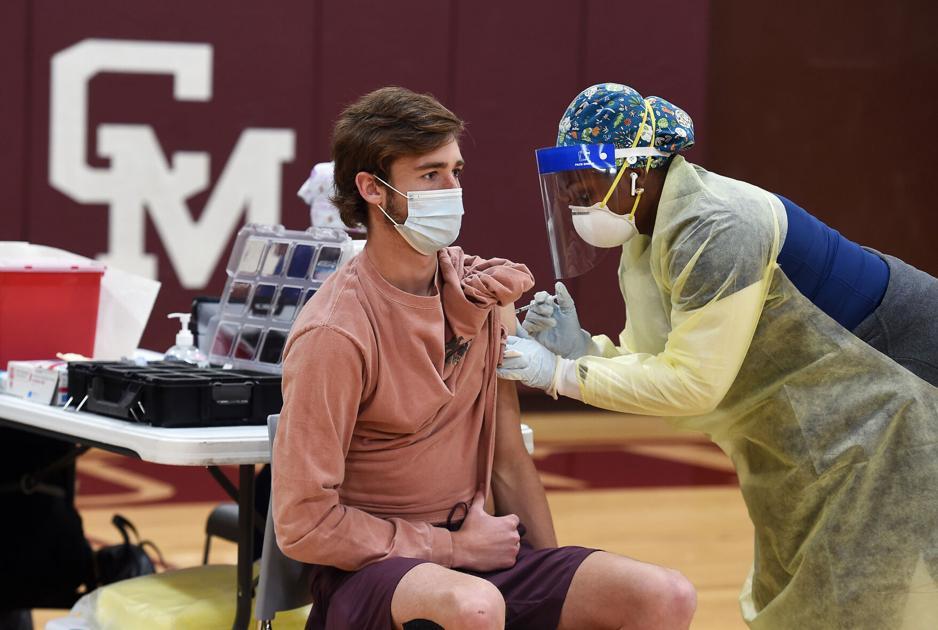The number of active K-12 school COVID outbreaks identified this year in Colorado rose by 28% over the past week, affecting nearly 400 new students.
As of last week the state had identified 149 active outbreaks this year in Colorado’s K-12 schools. But that number rose to 191 on Wednesday, according to data published weekly by the state Department of Public Health and Environment. Now 1,637 students have been infected as a result of those outbreaks, plus 172 staff members.
K-12 outbreaks now account for nearly a quarter of the state’s 779 clusters. The sharp rise in the number of cases and outbreaks comes as the state continues to grapple with a fourth wave of infections. That trend is driven by variants, and the K-12 cases are what could be expected given the recent spike, state officials have said.
Outbreaks at middle and high schools account for roughly half of all school clusters. But they make up a larger proportion of cases: Of the 1,637 student cases, more than 1,150 are among high or middle school students. Teens older than 15 have been approved for vaccination, but hose under the age of 16 are still unable to get vaccinated. Approval for the 11-to-15 group is expected in the coming weeks.
Thirty-two of the outbreaks are in El Paso County. Fifteen are in Denver. Across the metro area, including Denver proper, there are 76 active outbreaks that have been identified this semester.
The increase will come as no surprise to state leaders. In a press conference earlier this week, Gov. Jared Polis and a state epidemiologist both acknowledged the rise in cases. But Polis attributed it in part to vaccinated parents taking their unvaccinated children to social events. That sentiment was echoed by a spokesperson for the state health department.
“Modeling data show that Coloradans have been increasingly mobile as we exit our winter weather season, creating additional opportunities for exposure as travel and social gatherings increase, and unvaccinated children participate in activities with their vaccinated parents,” the spokesperson wrote.
The spread of variants, which now account for the majority of the state’s new COVID infections and are more transmissible than the standard disease strain, are driving up student cases, just as they are with young and middle-aged adults, the spokesperson and other experts said.
In an email, Clarissa Boggs-Blake, Denver’s emergency management coordinator, said that while there had been an increase in cases in students, “current case rates for school-aged individuals are not nearly as high as they were” during the fall surge.
“Many of the outbreaks being investigated by DDPHE in schools currently involve sports teams or sports-related activities, although we cannot attribute this trend to one factor alone,” she wrote, using the acronym for the Denver Department of Public Health and Environment.
Children’s Hospital Colorado is seeing an increase in patients coming in for treatment that reflects the overall rise in coronavirus cases in the community, said Sara Saporta-Keating, an epidemiologist.
The coronavirus has been on the rise throughout the state since mid-March, and cases among those 19 and younger represent about 26% of the total number of cases. While it is a higher percentage than in the past, it is still a lower overall number of cases than the state saw during the winter spike, state data shows.
Saporta-Keating doesn’t consider the current rise in cases a spike.
“It’s a little bit of an increase,” she said.
The spokesperson for the state agreed.
“A recent review of pediatric hospitalization data did not show evidence of increased hospitalizations among children compared to earlier in the pandemic, which could have indicated an increase in severity among infections,” they wrote in an email this week.
Children in need of hospital care generally fit two categories: those suffering from acute COVID-19 symptoms and a few who come down with multi-system inflammatory syndrome, she said. The rare syndrome can affect the heart, lungs, kidneys, brain, skin, eyes or intestinal organs. In those cases children can need help maintaining their blood pressure, she said.
Those who come down with acute COVID symptoms similar to those seen in adults tend to be teenagers, and those who get the syndrome tend to be younger and the symptoms don’t show up until two to six weeks after the COVID infection, she said.
She encouraged adults to get vaccinated as one of the best ways to protect children in the community under 16 who can’t yet receive the shots, she said. She encouraged everyone to continue to follow social distancing rules and to wear masks. If those are no longer in place in local businesses, she recommended families make choices that are best for them.
“It’s all about making decisions about what’s best for your family,” she said.
This content was originally published here.

